Oct 06, 2017: Mount Tabor is located in Lower Galilee, Israel, at the eastern end of the Jezreel Valley, 11 miles (18 km) west of the Sea of Galilee. It was the site of the Mount Tabor battle between Barak under the leadership of the Israelite judge Deborah, and the army of Jabin commanded by Sisera, in the mid 12th century BCE. It is the site of the Transfiguration of Jesus.
Mount Tabor is shaped almost like a half-sphere, suddenly rising from rather flat surroundings and reaching a height of 575 metres (1,886 feet), thus dominating by a good 450 metres the next town in the plain below, Kfar Tavor. The Catholic church at the top is well visible from afar.
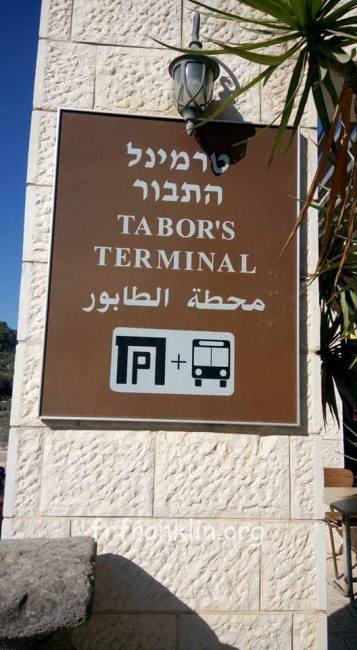

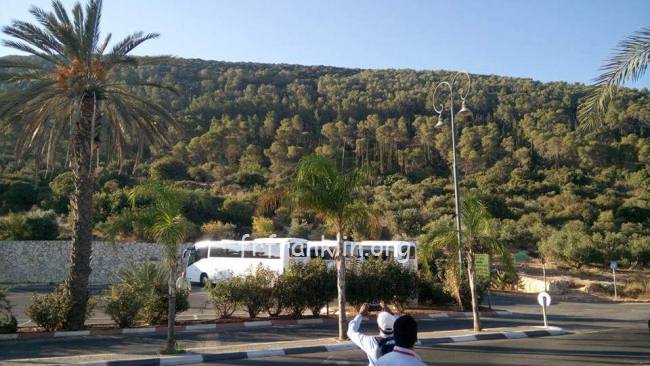
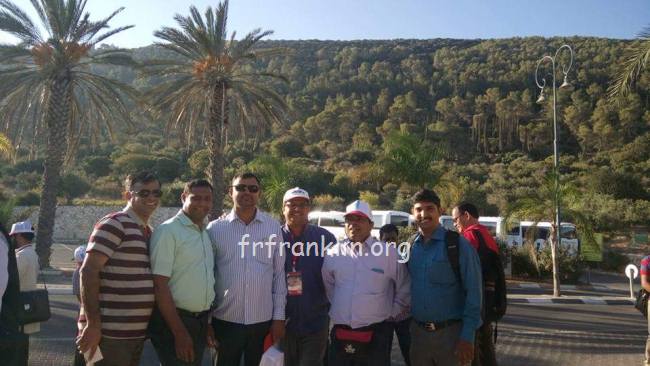
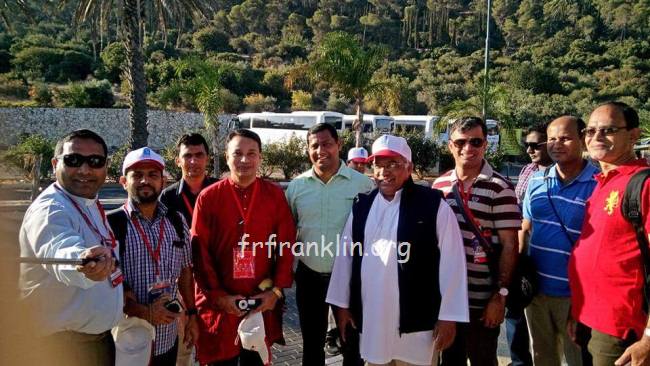
History:
At the bottom of the mountain was an important road junction: Via Maris passed there from the Jezreel Valley northward towards Damascus. Its location on the road junction and its bulgy formation above its environment gave Mount Tabor a strategic value and wars were conducted in its area in different periods in history.
Bronze and Iron Ages:
The mountain is mentioned for the first time in the Hebrew Bible, in Joshua 19:22, as border of three tribes: Zebulun, Issachar and Naphtali. The mountain's importance stems from its strategic control of the junction of the Galilee's north-south route with the east-west highway of the Jezreel Valley. Deborah the Jewish prophetess summoned Barak of the tribe of Naphtali and gave him God's command, "Go and draw toward mount Tabor, and take with thee ten thousand men of the children of Naphtali and of the children of Zebulun" (Judges 4:6). Descending from the mountain, the Israelites attacked and vanquished Sisera and the Canaanites.
Classic era:
In the days of the Second Temple (ca. 516 BCE - 70 CE), Mount Tabor was one of the mountain peaks on which it was the custom to light beacons in order to inform the northern villages of Jewish holy days and of beginnings of new months.
In 55 BCE, during a Hasmonean rebellion against the Roman proconsul of Syria, Aulus Gabinius, Alexander of Judaea and his army of 30,000 Judeans was defeated in battle at Mount Tabor. As many as 10,000 Jewish fighters were killed in the battle and Alexander was forced to flee, apparently to Syria.
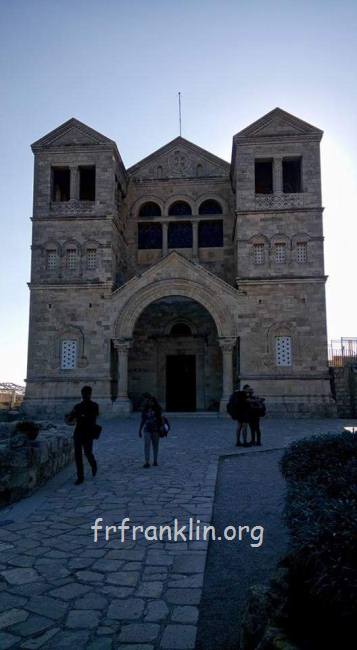
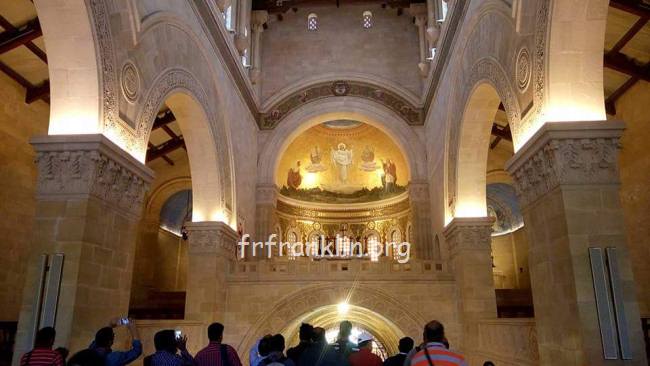

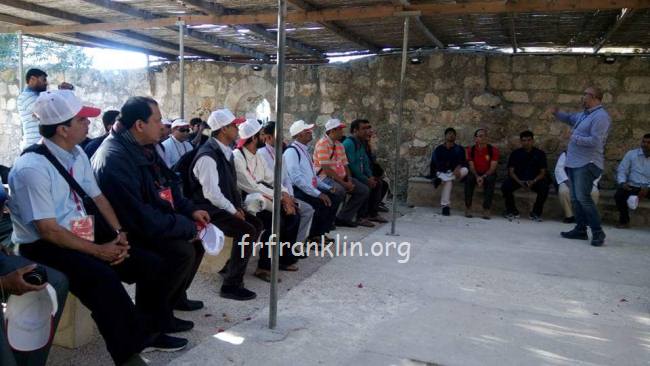
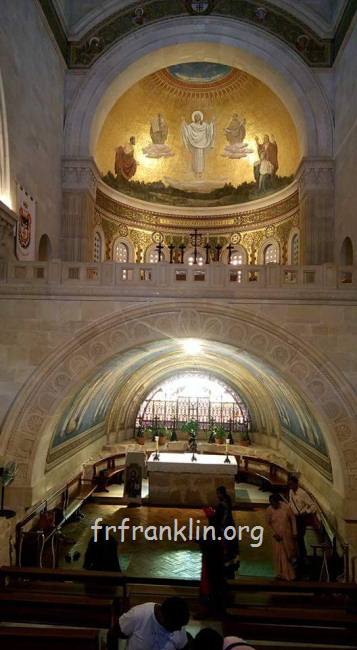
Roman province of Judea:
In 66 CE, during the First Jewish-Roman War, the Galilean Jews retrenched on the mountain under the command of Yosef Ben Matityahu, better known as Josephus Flavius, the later historian, whence they defended themselves against the Roman assault. Itabyrium, as Josephus calls it, was one of the 19 sites fortified by the rebels in Galilee under his very orders. According to what is written in his book "The Wars of the Jews", Vespasian sent an army of 600 riders, under the command of Placidus, who fought the rebels. Placidus understood that he could not reach the top of the steep mountain with his forces, and therefore called the fortified rebels to walk down the mountain. A group of Jewish rebels descended from the mountain, supposedly, in order to negotiate with Placidus, but they attacked him. The Roman forces initially retreated, but while they were in the valley, they returned towards the mountain, attacked the Jewish rebels, killed many of them, and blocked the road for the remaining rebels who tried to flee back to the top of the mountain. Many of the Jewish rebels left Mount Tabor and returned to Jerusalem. The rest of the fortified rebels in the fortress on the mountain surrendered after their water ran out. They then handed over the mountain to Placidus.
From the late times of the Roman province Judaea (6 CE–135 CE) and on, the writers of the New Testament relate that Jesus had brought Peter, James, and John his brother into a high mountain apart, and that Jesus became radiant here.
Byzantine period:
Due to the importance of Mount Tabor in Christian tradition, from the 4th century onward it became a pilgrimage site. According to descriptions of the pilgrims, during the 6th century there were three churches on the top of the mountain.
Middle Ages:
During the 8th century there were four churches and a monastery on the mountain. During the Arab Caliphate period, in 947, a battle occurred on Mount Tabor between different factions over the control of the Land of Israel on behalf of the Abbasid Caliphate.
During the period of the Crusades, the mountain changed hands many times between Muslims and Christians. In 1099 the Crusaders fortified the area of the monastery which was on the peak of the mountain, in order to protect the pilgrims from Muslims attacks. In 1101, when Crusaders controlled the area, the Benedictine monks rebuilt a ruined basilica and erected a fortified abbey. In 1212 the mountain was occupied by the Ayyubid Sultan Al-Adil I who built a large fortress at its top, but in 1229 it was again occupied by the Christians. In 1263, the Mamluk ruler Baibars occupied the fortress and destroyed the buildings on the mountain.

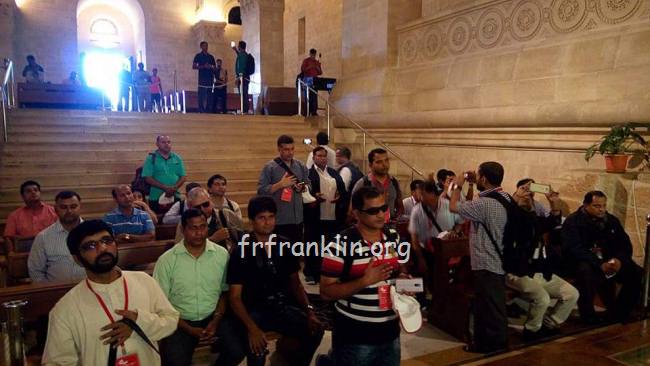
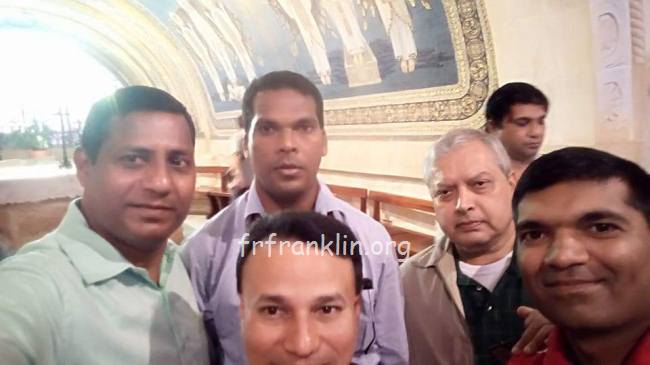


Ottoman era:
Mount Tabor, by Helga von Cramm. New Year chromolithographic card, c. 1870-1880. C. Caswell.
In 1799, during the time of Napoleon Bonaparte's Syrian expedition, in the valley between mount Tabor and the Hill of Moreh, the Battle of Mount Tabor was fought in which a French force of about 3,000 soldiers under the command of Napoleon and general Jean Baptiste Kléber won against an Ottoman force of about 35,000 soldiers.
During the 1948 Arab–Israeli War members from the Arab Al-Sabehi tribe participated in the army of the Arab Liberation Army of Fawzi al-Qawuqji and amongst others killed seven members of the kibbutz Beit Keshet. At the start of May 1948 the Golani Brigade occupied Mount Tabor. Most members of the tribe were forced out to Syria and to the Kingdom of Jordan, except for one branch of the tribe, the clan of Shibli, whose members refused to leave their land. After the war their village was established, Arab Al-Shibli, which is nowadays part of the village Shibli-Umm al-Ghanam. The Bedouin village was admitted as a tourist village by the Israeli government and the locals are famous of being hospitable and very friendly to visitors.
Since the late 1960s many of the tribesmen joined the Israeli security forces (such as IDF, Border Guarding Unit and police).[citation needed] Many tribes in the region, like Arab-Al Hieb, began their military cooperation with the Jewish underground forces before the establishment of the state, in the late 1930s.
Today, in order to reach the mountaintop, buses must cross through the main road of Shibli or Daburiyya. At the top of the mount there are two Christian monasteries, one Greek Orthodox on the northeast side, and one Roman Catholic on the southeast side.
Church of the Transfiguration:
Between 1919 until 1924 an impressive Roman Catholic church of the Franciscan order named "Church of the Transfiguration" was built on the peak of Mount Tabor. The architect who designed the church, among many other more in the Holy Land, was Antonio Barluzzi. The church was built upon the ruins of a Byzantine church from the fifth or sixth century and a Crusader church from the 12th century, which was built in honor of Tancred, Prince of Galilee. The friars of the church live next to the church in a monastery established in 1873.
The church consists of three naves which are separated by two rows of columns supporting arches. In the two bell towers on either side of the entrance, there are two chapels. The northern chapel is dedicated to Moses and it contains an image of him receiving the Tables of the Law on Mount Sinai, and the southern chapel is dedicated to Elijah the prophet and it contains an image of him invoking God during his confrontation with the Ba'al prophets on Mount Carmel.
In the upper part of the church, above the altar, there is a mosaic which depicts the Transfiguration, and on the Transfiguration holiday on August 6, it is illuminated by the sun beams which are reflected by a glass plate located on the floor of the church.
A rock near the entrance of the church has an engraving in ancient Greek and beside it there is an engraving of a cross. Nearby there are the remains of the monastery of San Salvatore, which was established by the Benedictines in 1101.
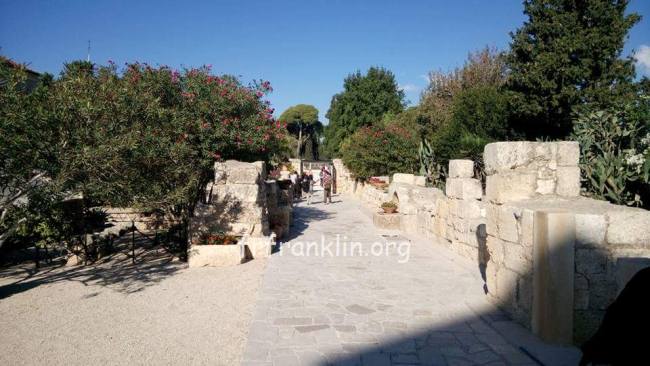
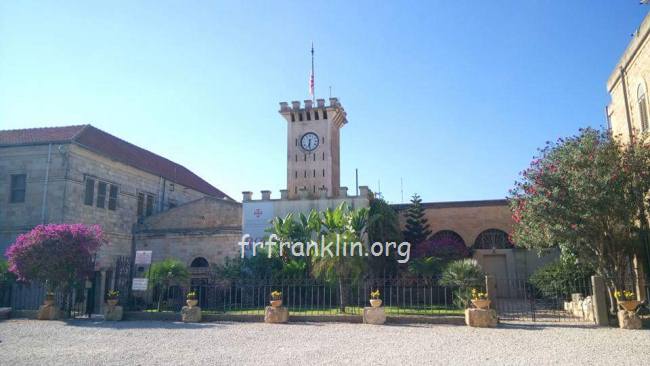
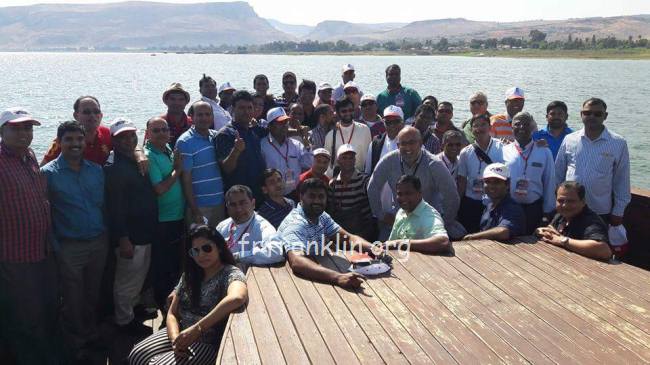
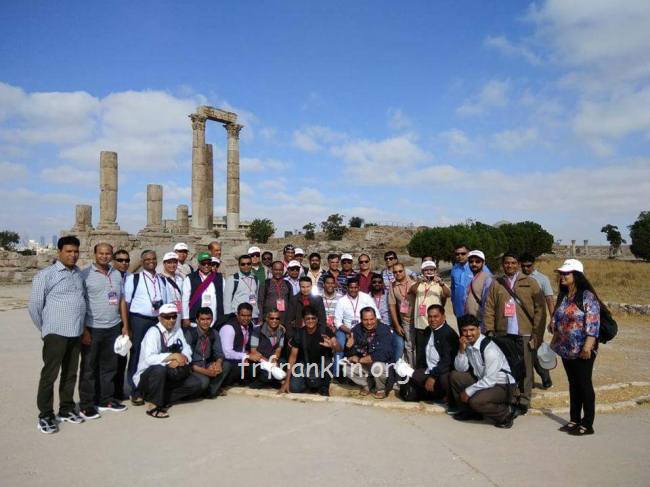
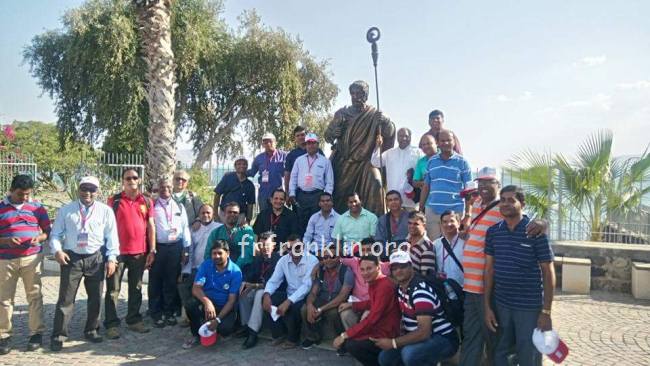

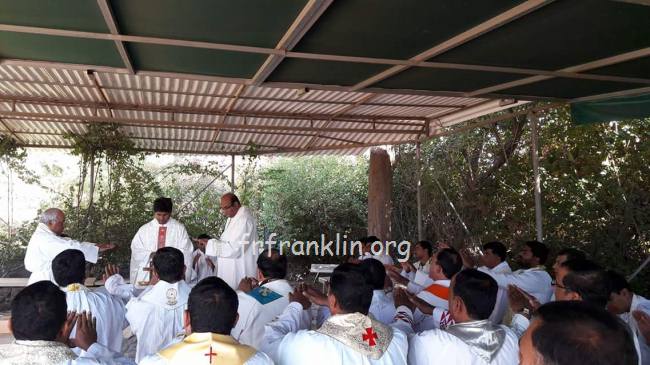
The Eastern Orthodox sanctuary:
The main church of the Greek Orthodox monastery dedicated to the Transfiguration and lends its name to the entire monastery. The construction of the current church was started by a Romanian monk, Irinarh Rosetti, in 1859, the year of his death, and was finished by his disciple, Nectarie Banul, in 1862, making it the first religious structure built by Romanian Christians in the Holy Land.
Northeast of the Church of the Transfiguration, there is the more modest Church of the Prophet Elijah.
Northwest of the main church there is a small cave-church named after Melchizedek, the King of Salem. According to the Christian tradition, this cave was the place where Abraham met the king of Salem. The cave was known to pilgrims and local Christians during the Middle Ages. With an increase in pilgrimages, the church is now open to the public (though it closes for a few hours at noon).
An all-night vigil is held at the Eastern Orthodox church every year on the Orthodox Feast of the Transfiguration on August 19 (which corresponds to August 6 according to the Julian Calendar).







Comments powered by CComment